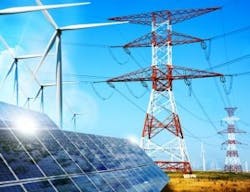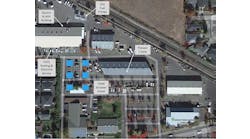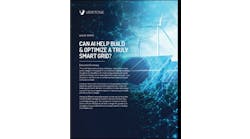Will the New Solar Tariffs Hurt the Microgrid Industry? Yes and No
Energy insiders offered mixed views this week about how new solar tariffs imposed by the Trump administration will impact the microgrid industry.
By Eviart/Shutterstock.com
The tariff on imported solar panels and cells came in response to complaints from two foreign-owned solar companies operating in the US. The companies said they were forced into bankruptcy as a result of cheap solar panel imports.
The added cost won’t make or break a microgrid project, said some microgrid developers, noting that the larger the microgrid, the more impact the solar tariffs will have. The 30 percent tariff, which declines by 5 percent per year over four years, offers an exemption for the first 2.5 GW of imports.
Join the microgrid industry in discussions like this one at Microgrid 2018
Meanwhile, some renewable energy supporters warned that the tariffs could result in microgrid developers’ replacing solar with less environmentally sound resources, such as natural gas.
Won’t make or break a microgrid project
Mark Feasel, vice president of Schneider Electric’s electric utility segment and smart grid business, said that Schneider’s microgrid projects generally consist of no more than 20 percent solar. So increases in solar prices would not make or break a project.
“I don’t see a job fundamentally affected by the solar part of the job,” he said.
For example, Schneider designed its Boston One microgrid project to include as much solar as possible, calling for solar on the roof and making it part of every parking space, he said.
“By the time you add storage etc., it’s about 20 percent of the deal,” he said.
Microgrid customers do not necessarily seek out solar per se, but may want its attributes, according to Feasel. “They don’t necessarily say, “‘I want solar.’ They say, ‘My energy costs are too high and I have sustainability goals.’”
On the other hand, Maureen McDonald, business development manager, Southland Energy, which is developing a solar microgrid at a school district in southern California, said that the solar tariffs will hurt systems like microgrids that incorporate solar energy.
“The new tariffs on solar energy cells and modules will be disruptive to the US solar industry in the near term – impacting not only solar collection and generation equipment but the cost of complete energy solutions, hampering the installation of microgrids and battery storage systems designed for use with solar,” she said.
These complete energy systems are cost-sensitive, and often the solar component makes the economics of the entire system work, she added. A sudden price increase such as the tariffs will hurt the adoption of “reliable, affordable energy for the future,” she said.
Echoing her remarks was Gregory Reed, professor and director, Center for Energy and the GRID Institute, Swanson School of Engineering at the University of Pittsburgh.
“I think this will have a negative impact for most and for the industry overall,” he said. “The decision economically to install solar is still very hard to make and very tight in many cases, in regards to the return on investment and payback period.”
Tariffs or any added costs can prompt a decision-maker to delay a solar solution or scrap it entirely, he said.
He noted that solar is generally the least expensive renewable energy component of a microgrid, and the tariffs may mean more natural gas is used in microgrids.
Much-needed certainty for the microgrid industry
On the positive side, the tariffs provide much-needed certainty in the solar and microgrid industry, said David Chiesa, senior director, global business development for S&C Electric.
“It’s a limited tariff and it steps down over time. That provides certainty in the industry and doesn’t destroy it by making it ongoing and never ending,” he said.
Chiesa noted that solar is usually an important renewable component in microgrids, and having that certainty about its pricing is essential to the market.
For small microgrids, the tariff has no effect, but for larger ones — 1 MW or more — projects have been delayed due to uncertainty surrounding the distributed energy component, Chiesa said.
The size and configuration of the microgrids will determine how much they’re impacted by the solar tariff, said Dan Nordloh, executive vice president of EnSync Energy Systems, which has microgrids in the US.
Nordloh added that microgrids will continue delivering value in spite of the tariffs. Solar-plus-storage modeling helps developers work the numbers in ways that create winning projects, he said.
Better ways to go
McDonald said that there are more effective ways to support the US solar manufacturing industry than adding the tariff.
“Well-planned policies that can impact solar system costs, such as the gradual phasing out of incentives, can be absorbed by the industry as costs decline. This action doesn’t allow time for that. Many projects have been in the planning stages for months, if not years, and are not prepared to absorb the hit,” she said.
Suniva and SolarWorld, two foreign-owned manufacturers operating in the U.S., filed a complaint in May 2017 with the U.S. International Trade Commission (ITC), saying that they were forced into bankruptcy because of competition from cheap imports.
What’s your take on the solar tariffs? Join the microgrid industry discussion on our LinkedIn Group, Microgrid Knowledge.








